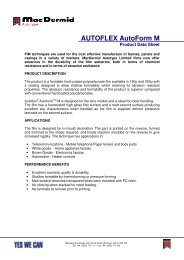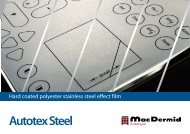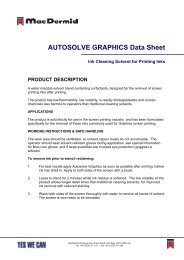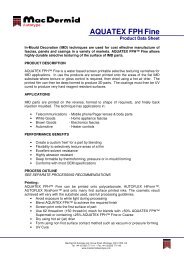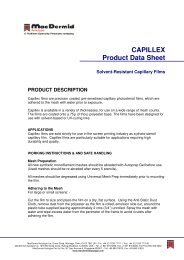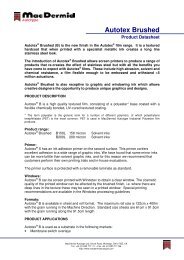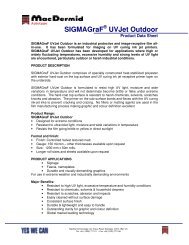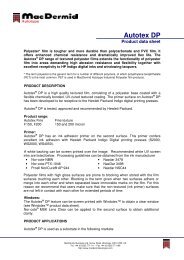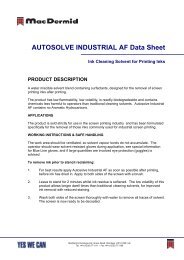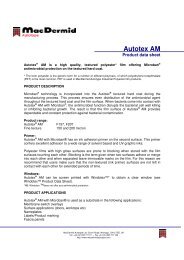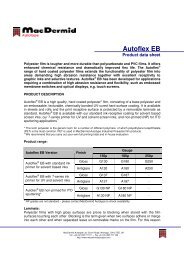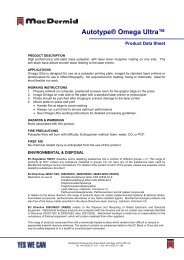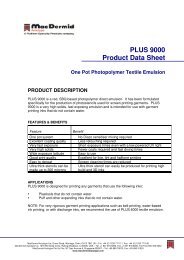Screen E-Book (.PDF) - MacDermid Autotype
Screen E-Book (.PDF) - MacDermid Autotype
Screen E-Book (.PDF) - MacDermid Autotype
- No tags were found...
You also want an ePaper? Increase the reach of your titles
YUMPU automatically turns print PDFs into web optimized ePapers that Google loves.
Figure 3 The same meshand screen as Figure 2but this time a high Rzstencil leads to the classicstarry dot created by leaksthrough the poor gasket.It’s been obvious to us all that the patternof the mesh interferes with the pattern ofthe print, so is guaranteed to give us moiré.The mesh causes three types of interference.First, as shown in Figure 2, the mesh canblock fine details of some dots makingthem smaller than they should be. This effectis well-known and the moiré from itcan be quite distinctive.Second, as shown in Figure 3, we can getprecisely the opposite! If you have a highRz stencil you will get the classic leaking ofthe ink where the Rz causes a poor gasket.As the Rz comes mostly from the mesh,this leakage must follow the pattern of themesh, so you can get a strong interactionthat makes dots bigger than they shouldbe.Third, there’s ‘negative sawtoothing’. This effectis often seen as a rough leading edgeof straight lines when a printer uses a thickink and a thick stencil. The same combinationmeans that dots get off to a bad startwhen they coincide with the mesh.For the discussions that follow it doesn’treally matter which type you have (youmight even have a mixture). The fact thatyou have a strong interaction betweenmesh and stencil means that you mighthave a moiré. The question we all wantto know is whether you will see it in yourprint.We can quickly agree with some wellknownrules of thumb.Everyone agrees that the smaller the meshdiameter the better. If you can changefrom a 34 mesh to a 31 mesh, you will reducethe visibility of any moiré.And everyone agrees that in general, asMark Coudray correctly pointed out, thehigher the ratio of mesh count to lpi, theweaker (in general) the moiré. With modernpressures to go to high lpi prints it’sgetting more and more difficult to find amesh with a sufficiently high ratio, but ingeneral it’s worth the trouble.It’s often said that if the mesh and the imageare in an exact integer ratio (i.e. themesh frequency is exactly divisible by theimage, such as 150/50=3) then you are likelyto get strong moiré. This, unfortunately,109



